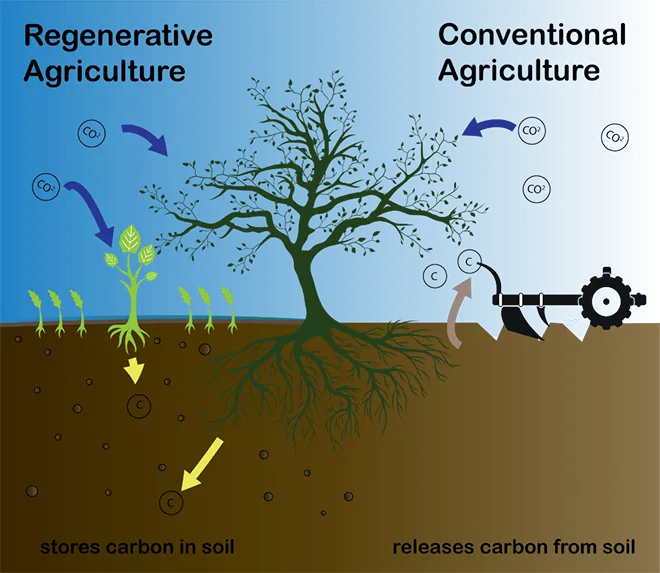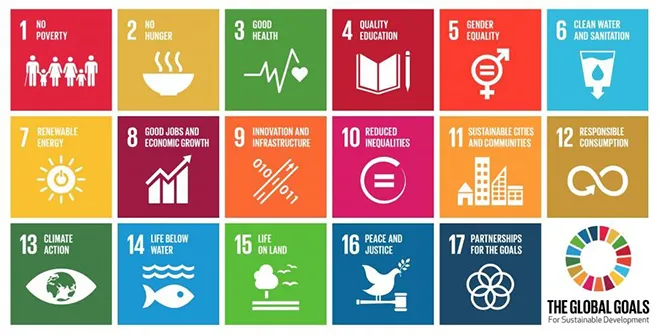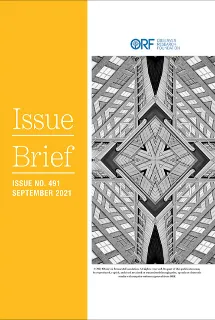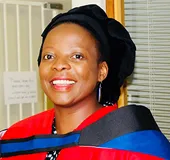Introduction
Climate change could be humanity’s biggest challenge yet, and the resultant, cascading crises are only beginning to manifest themselves.[1] For instance, 2019 was reported to be the second warmest year on record;[2] thereafter, 2020 became the first hottest year, overtaking 2016.[3] The global community continues to experience one climate crisis after another. Meanwhile, many states are lagging behind in the implementation of the Sustainable Development Goals (SDGs), whose Goal 13 exhorts the United Nations (UN) member countries: “Take urgent action to combat climate change and its impacts.”[4],[5]
In the past one-and-a-half years, the COVID-19 pandemic has only added to the world’s uncertainty. Amidst the massive economic and humanitarian crises brought about by the pandemic, however, 2020 saw a decrease of about 3 billion tonnes in global carbon dioxide emissions.[6] As economic activity came to a standstill with the nationwide lockdowns that were implemented as a response to the outbreak of COVID-19, carbon emissions declined. However, most experts agree that emissions will rise once again, as soon as the global economy restarts and countries attempt to revive their economies.[7]
In a global gridlock on issues such as climate change, the BRICS grouping (Brazil, Russia, India, China, and South Africa) can play an important role in stimulating change, at a time when Western economies are slowing down. For one, the BRICS’s leading commitment to global issues such as climate change could provide a necessary solution to the perceived weakening of its soft power.[8] Indeed, the implementation of the SDGs, including the targets on global warming, has become more critical than ever. Still, the framework provided by the 17 SDGs and the 169 targets and indicators have not been effective in enabling wide societal change to overcome the implementation deficit since 2015.[9] Scientists agree that the world needs to see drastic changes in the way humans relate to the environment, if objectives of reversing global warming are to be achieved.[10]
This brief explains the BRICS’s commitment to finding innovative ways to fund transformative projects that will help mitigate climate change and fulfil the SDGs. In particular, the brief focuses on how agricultural practices can be improved to abate their contribution to the worsening of climate change. After all, agricultural methods and practices have been found to be related to the various challenges resulting from global warming—from water scarcity to crop loss.[11] The brief argues that BRICS efforts at climate action would work if a joint fund is created to finance so-called ‘low-hanging fruits’ such as regenerative agricultural practices. Regenerative agriculture is a holistic land management practice that leverages the power of photosynthesis in plants to close the carbon cycle and build soil health, crop resilience, and nutrient density.[12] If implemented correctly, these methods can contribute significantly to mitigating carbon emissions and improving soil quality.
The Case for Regenerative Agriculture
Regenerative agriculture has its roots in the late 1970s. It is a concept that describes maintaining and improving resources through continuous organic renewal of the complex living system.[13] “Regenerative” means the morphogenic replacement of lost or damaged parts or structures in organisms or ecosystems.[14] Therefore, regenerative agriculture “seeks to improve the health of the soil that has been depleted of nutrients over many years of exploitative farming, and could benefit from a reboot of its microbiological make-up … [It] is a general term for practices that improve soil conditions on cropland … Although not exhaustive, some examples of regenerative practices include reduced use of synthetic pesticides and fertilizers, less frequent tilling, and cover cropping.”[15]
Healthy soil acts as a carbon sink, storing vast amounts of carbon that plants withdraw from the atmosphere via photosynthesis. In essence, in the words of Ray Archuleta, veteran conservation agronomist, regenerative agriculture is a renewal of the human heart and mind, a framework of thinking and consciousness that emulates nature’s intelligent design, patterns, and biological systems. It is a notion that draws lessons from ancestral wisdom, which does not focus on tools or processes, but rather emphasises understanding about how to farm/ranch within one’s ecological context. “This type of relationship-based agriculture is a journey of healing for all human and biological communities, a new food production system that facilitates beauty and life.”[16]
Figure 1: Regenerative vs Conventional Agriculture[17]

Regenerative, instead of conventional agriculture, can provide some of the most relevant answers to water scarcity, food security and climate change (see Figure 1). Regenerative practices seek to facilitate the production of nutritious, sustainably grown food, fibre and clean water cycles.[18] They not only boost soil biota diversity and health but also increases biodiversity above and below the soil surface, while expanding water-holding capacity and sequestering carbon at greater depths. Thus, it can bring down climate-damaging levels of atmospheric carbon dioxide and improve soil structure to reverse civilisation-threatening, human-caused soil loss.[19]
BRICS, Climate Change, and SDGs
It has been some years since an institutional framework for individual and collective action was put in place, jointly defined through SDGs and the Paris Agreement on Climate Change. The question for BRICS is whether it will find its role in supporting these multilateral climate and environmental initiatives.[20] To be sure, since 2009, BRICS has emphasised its commitment to fighting climate change. In their 2009 Declaration, the BRICS countries stated that they were ready for constructive dialogue on how to deal with climate change based on the principle of common but differentiated responsibilities,[a] given the need to combine measures to protect the climate with the imperative to fulfil their socioeconomic development tasks.
The group adopted the BRICS Leaders’ Xiamen Declaration in September 2017, reaffirming their commitment to fully implement the 2030 Agenda for Sustainable Development. They committed to enhance BRICS cooperation on climate change, and in particular, expand green financing. They agreed to take concrete actions to advance result-oriented cooperation in such areas as prevention of air and water pollution, waste management, and biodiversity conservation.
In agriculture, the BRICS states agreed to deepen cooperation in five priority areas:
- Food security and nutrition
- Adaptation of agriculture to climate change
- Agricultural technology cooperation and innovation
- Agricultural trade and investment
- The application of communication technology in agriculture to contribute to the achievement of the SDGs
The BRICS countries recognise that they constitute a significant proportion of the world’s population, land area and natural resources, and that the choices they make carry significant ramifications to the rest of the world.[21] To this end, BRICS implemented several projects that aim to promote cooperation on climate change and sustainable development. For instance, the Youth Energy Agency encourages young scientists and researchers from the BRICS countries to conduct research, promote public awareness, and scale-up the UN 2030 agenda.[22] This agency also launched a platform, the BRICS Sustainable Ideas Bank, that seeks to systematise the collection of public input data regarding SDG-related ideas relevant for the BRICS countries, monitor the dynamics of SDG-driven proposals, and amplify SDG-friendly suggestions and participation throughout the BRICS states.
Proposals
This brief offers three specific strategic proposals for BRICS in order for the grouping to formulate the right strategy for financing regenerative agriculture. If implemented properly, these measures have the potential to facilitate the implementation of several SDGs: Goal 1 (‘No poverty’), 2 (‘No hunger’), 3 (‘Good health’), 6 (‘Clean water and sanitation’), 13 (‘Climate action’), 15 (‘Life on land’), and 17 (‘Partnerships for the goals) (see Figure 2).[23] These proposals can help BRICS implement specific climate change projects to meet the SDGs and highlight innovative ways in which the grouping can utilise its capacity to play a significant role in the fight against climate change.
Figure 1: Sustainable Development Goals[24]

Proposal 1: Create a Regenerative Agriculture Working Group
The BRICS countries, on their own, still maintain some of the practices and methods of regenerative agriculture; they are not, however, systematically organised. In Brazil, for example, Rizoma Agro is on a mission to revert the climate crisis by scaling up the practice of regenerative, organic agriculture. It has sought innovative ways to improve citrus production in agroforestry in an efficient way, and has also found a way to profit from organic eggs, fruit production, grain production, and dairy.[25]
In Russia, following several years of a near-collapse of the food and agricultural system, President Vladimir Putin announced that the country should become a leader in organic food in 2015. Subsequently, in 2016, Russia banned the breeding and cultivation of genetically modified organisms. In a speech in January 2018, Prime Minister Dimitri Medvedev announced that Russia would capture 10 to 25 percent of the global market for organic food.[26]
In India, meanwhile, there is high interest in regenerative agriculture and the country understands that its future lies in organic farming, as well as empowering local farmers to employ techniques that give back to the land rather than merely taking away from it. Furthermore, practices that are focused on building high-quality soil, retaining rainwater, improving the water cycle, increasing biodiversity, and promoting both human and animal welfare are highly valued in India.[27]
Small organic farmers in China’s Yunnan Province are employing natural ways of farming that avoid the use of pesticides and fertilisers that are detrimental to the health of the soil. They have chosen closed systems and agro-ecological methods to farming. These farmers understand that agricultural ecosystems work at the personal, societal and institutional levels, and are pursuing a self-sustaining economic business model.[28] South Africa, for its part, has set up a Regenerative Agricultural Association—a non-profit, education and advocacy organisation that is working to stop the catastrophic consequences of industrial agriculture by facilitating farmers and consumers in transitioning to regenerative agriculture.[29]
Evidently, there are various activities across the BRICS countries that are scaling up regenerative agriculture and finding new ways to protect the soil. They are also working on drawing down carbon from the atmosphere like soil cultivation.[30] BRICS, as a forum, must establish a regenerative agricultural working group to focus only on these projects, specifically those that facilitate locking carbon in the soil.
Proposal 2: Biosequestration of CO2 in Soil
Within the context of climate change, scientists have agreed that it is possible to implement carbon drawdown practices from the atmosphere and lock it in the soil, and thereby build resiliency into the ecosystem.[31] Thus, enhanced sequestration of atmospheric CO2 in the soil, ultimately as stable humus, may prove a more lasting solution than temporarily sequestering CO2 in the standing biomass through reforestation and afforestation. Such actions will also help reverse processes of land degradation, thus contributing to sustained food productivity and security for the people in the regions concerned.[32] BRICS should fund activities on biosequestration of CO2 in the soil.
Proposal 3: Agricultural Projects that Reduce Use of Cancer-Causing Pesticides
While pesticides kill microbes in the soil, thus aiding farming activities, they bring harm to human health, too. The use of pesticides, in particular for monoculture, kills the soil rather than nurturing it. Conversely, all regenerative agricultural practices that heal the soil—i.e., the Earth’s skin—will also heal the climate.[33]
The use of pesticides is rampant across the BRICS countries and researchers are increasingly worried about their long-term health implications. They warn about an epidemic of chronic diseases, particularly prostate and breast cancer, and also other cancers like non-Hodgkin’s lymphoma.[34] For instance, Brazil is one of the largest agricultural producers in the world and the second-largest country exporting these products; the country’s trade in these products plays an important role in the local economy.[35] However, in 2015 alone, some 899 million litres of pesticides were sprayed on crops across the country. Mato Grosso, Paraná and Rio Grande Sul—Brazil’s agricultural production corridors where production strongly relies on the use of chemicals—used the largest quantities.[36]
Numerous studies have linked pesticides such as clopyralid, cypermethrin, diazinon, and permethrin to different forms of cancer; this means these chemicals are poisonous, and have brought decades’ worth of damage to human, animal and environmental health.[37] BRICS should fund agricultural projects that reduce the use of cancer-causing pesticides across its member countries.
Conclusion
The views expressed above belong to the author(s). ORF research and analyses now available on Telegram! Click here to access our curated content — blogs, longforms and interviews.

 PDF Download
PDF Download





 PREV
PREV


